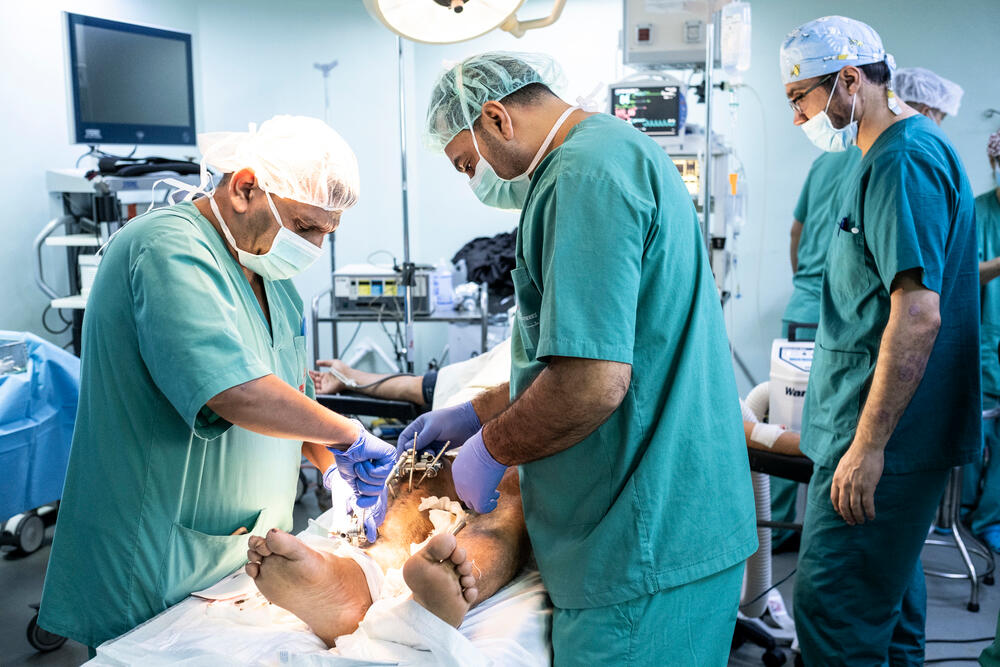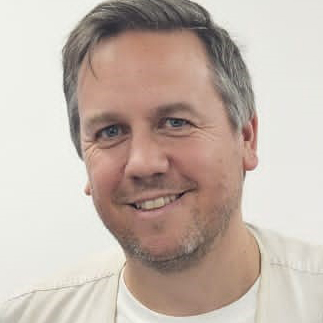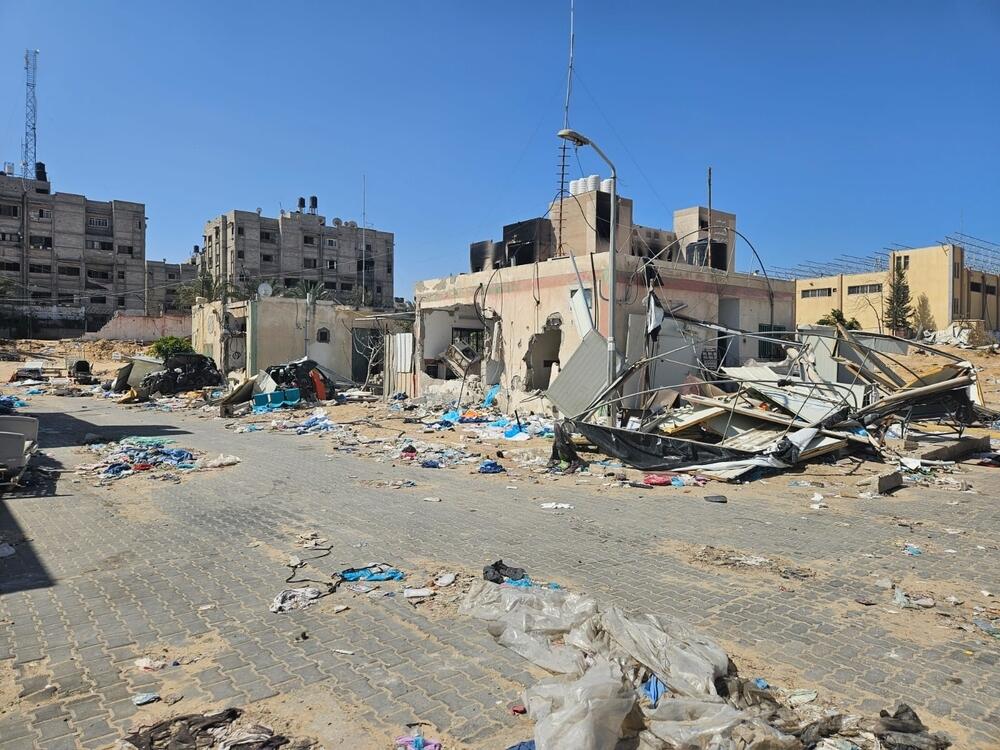Gaza: “Providing trauma care was a relief - it meant I could do something”
When Dr Chris Hook went to Gaza as part of MSF’s first wave of staff to enter since the start of the current conflict in November 2023, he described the experience as the most brutal situation he had witnessed in his career.
The war continued, and despite the difficulty of accessing the Strip he went back again in May. Just as he arrived, Médecins Sans Frontières / Doctors Without Borders (MSF) teams were reopening the trauma and burns ward in Nasser Hospital.
"Somehow Nasim* survived the explosion. Both his legs were broken in the blast.
When someone has a severe traumatic injury, the first 10 minutes are key to saving lives. In Gaza, as in other contexts with active conflict, MSF teams have set up ‘trauma stabilisation points’ to provide initial care to people whose injuries are so severe there is no time to get them to a hospital.
The ABCs
The first step is to stop severe bleeding. This might involve swiftly applying tourniquets or bandages. Then, if the patient is unconscious, they are put in a safe position and have their airway maintained so they're able to breathe. The final step is to support the patient’s circulation; providing blood and controlling any additional haemorrhages.
This is known as the C-ABC of trauma care (Control bleeding and maintain Airway, Breathing, and Circulation). The goal is to buy patients time so they can survive long enough to reach a bigger facility where they can be stabilised further, receiving lifesaving, limb-saving operations.
The basic things to save life and limb
Nasim was brought to Nasser Hospital in Khan Younis, South Gaza, which MSF is supporting. Ideally in trauma care, the hospital should be in a place where there’s no active fighting and where you have access to surgery, physiotherapy, and inpatient wards. However, in Gaza that often isn’t possible.
There’s no way to get more than a couple of kilometres away from any active fighting, and this past year has seen multiple hospitals come under attack. Many struggle to offer even basic care because of a lack of supplies and the overwhelming numbers of injured people.
When Nasim arrived at our orthopaedic service he had been stabilised, but he was in a lot of pain. The difficulties getting adequate supplies meant the hospital’s accident and emergency had run out of pain relief. His family were worried that he wouldn’t walk again.
Essential treatment
MSF has its own pharmacy and although we also struggle to stock supplies, luckily this time we were quickly able to give Nasim morphine to bring his pain under control. We assessed the damage to his legs.
His family’s anxiety was understandable: many people in Gaza have injuries so severe that the only option is amputation. This could be devastating, especially as Nasim was the family’s main breadwinner.
Nasim had fractures to both femurs – the big bones in his thighs. He needed external fixators: devices with metal pins that go through the skin, into the bone, holding the fracture in place so it can heal. The team got to work.
The next day, I saw Nasim on the ward with his family. His pain was much better, his femurs were held in place, and he’d already seen a physiotherapist. It was great to see how much happier Nasim and his family were already.
The physio had explained that he should be walking on crutches by the next day, and discharged within the week.
Challenges
When a trauma patient is discharged in Gaza, that’s not the end of the story.
Almost the entire population has had to flee their homes attempting to escape the bombardment. Many are now living in tents, in places where it's almost impossible to stay clean because there’s not enough water or adequate sanitation. For anyone with a fresh wound, the risk of infection is really high.
Meanwhile, access to food, particularly for the poorest, has become very difficult. This has a knock-on effect for healing and the body’s ability to fight infection.
"The situation is a badly injured population with no real way to heal."
Lastly, accessing follow-up care is really hard. There's very little transport available, the roads are now sand, and people are ordered to move their families to new areas on an almost daily basis. This means it’s incredibly difficult for someone with a bad burn or a broken leg to travel even five kilometres to come for follow-up.
Lots of the patients turn up again weeks later in a terrible state having not been able to access their care for a long time. The situation is a badly injured population with no real way to heal.
Walking again
In hospital, Nasim needed antibiotics for a few days, and regular dressing changes.
He would also need a lot of physiotherapy, ongoing pain relief and good nutrition. We explained to his family the care and support he would need to make a good recovery. There was still a way to go.
Despite the challenges ahead, for Nasim and his family, the reassurance that his legs could get better and that he’d be able to walk again was immense. My Arabic is terrible, but you can always tell when someone’s saying thank you.
Never forgotten
In my job as a doctor specialising in emergency medicine, you do get more used to seeing injured people and difficult conditions. But I don’t think I’ll ever get over seeing the level of destruction and the impact on people’s lives I have seen in Gaza. Providing trauma care was almost a relief because I could do something about that.
After 7 October Gaza’s borders were closed and many international staff were evacuated. That was hard for local people to see, and I know that in that moment, many felt abandoned by the international community.
Last November I was part of the first MSF team going back to Gaza. For me, I think I will look back at my life and that will always be the most important thing that I've been involved in. It was so important to show our Gazan colleagues that they hadn't been forgotten, and to work together to give patients like Nasim a chance to heal."
*Name has been changed
MSF Emergency Trauma Care
In the aftermath of an attack, MSF medics may need to stop life-threatening bleeding, treat a gunshot wound or care for bomb blast survivors. They need to think fast, and act fast.
Around the world, our teams are working right now to beat the clock and save lives. We are in the conflict zones that hit the headlines, and the ones that don't.




